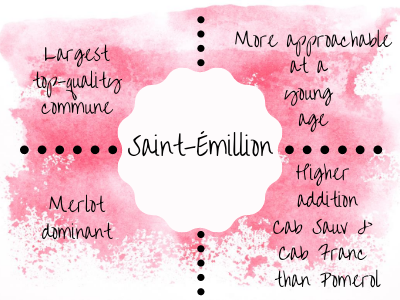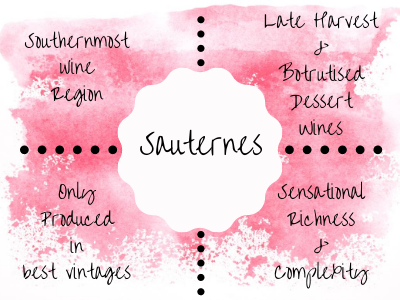A Beginners Guide To One Of The World’s Most Successful Wine Regions
Bordeaux is widely regarded as France’s most significant wine region, and for a good reason. For centuries, this region has produced exceptional wines that have captivated wine lovers worldwide. Today, Bordeaux remains the world’s most commercially successful wine region. It’s not uncommon to hear Left Bank versus Right Bank, or talk of Saint-Julien or Graves in conversations on the topic. But what does it all mean for you? The details can be overwhelming, but don’t worry – let’s break it down together.
While mastering the intricacies of Bordeaux may take several years of study, there are a few basics that can make navigating the region easier. With some fundamental knowledge on the area, you can choose your next Bordeaux bottle with confidence – whether it’s to impress your boss at a dinner party, celebrate a special occasion, or simply learn more about this famous wine region. Below you will find a beginners guide to Bordeaux.

Terroir of Bordeaux
The region of Bordeaux encompasses nearly 300,000 acres of vineyards. The Atlantic Ocean helps to temper the climate, making it a temperate maritime climate. What that means for you is the ocean keeps things from getting too hot and over-ripening. The Gironde Estuary flows down the center of the region, fed by the Garonne River and the Dordogne River, eventually emptying out into the Atlantic ocean. This dividing water source leads to a wide diversity of climate and soil types. You can also use it to better understand where Right Bank versus Left Bank is. This one is pretty simple. The Left Bank is on the left side of the river banks, the Right Bank is on the right side, with Entre-Deux-Mers falling in the island between the two rivers on the region’s southern side.

Left Bank Bordeaux
The Left Bank of Bordeaux is located to the south-west of the Gironde estuary and Garonne River, closest to the Atlantic Ocean. Throughout time the region has been built by eroded soil washed down by the Pyrenees Mountains. Why is this important to know?
It’s sandy and gravel soils retain heat and drain well. This allows the roots to be able to dig deeper to find moisture. The result is wines with more complex flavors. Due to its proximity to the Atlantic ocean, the left bank tends to be cooler than the right bank.
Okay, so now you know a bunch of complex boring stuff. What this basically breaks down to is that the Left Bank is perfect for Cabernet Sauvignon dominant reds. For this reason, Cabernet Sauvignon is the most used varietal for blends in the left bank. The Atlantic ocean helps to cool the grapes keeping them from overripening. This restricts the tannins and makes the wine more balanced overall. Merlot, Cabernet Franc, Petit Verdot, and Malbec are added as blending grapes to further soften the tannins, add luscious body, and herbaceous qualities.
The left bank has three main subregions of note. Each region specializes in specific styles of wine. Knowing a little bit about each will help you to know what to expect from the wine you’re purchasing. With each region/commune I will give you brief descriptors of what you will most commonly find in the wines.
Médoc
The Médoc region is about 50 miles of vineyards that run along the Gironde estuary. It is the farthest north region on the left bank and is divided into two areas; Bas-Médoc (to the North) and Haut-Médoc (to the South). While both regions are great, Haut-Médoc is the one we will concentrate on, as it is the more important and sought after of the two. Blends coming from the region are generally Cabernet Sauvignon dominant often blended with Cabernet Franc and Merlot.
Wines from Haut-Médoc come from four communes scattered throughout the region. We will work our way from the Southernmost commune to the Northernmost.

Margaux
The southernmost commune. Located just above the city of Bordeaux where the Garonne River and Dordogne River meet at the Gironde Estuary. Home to more classified growths than any other commune in Haut-Médoc, the most important is the premier cru estate, Château Margaux. Wines from Margaux are generally Cabernet Sauvignon dominant. Most known for being very elegant and smooth, showcasing softer tannins and intense aromas.

Saint-Julien
This is the smallest of the important communes of Haut-Médoc. Producing very consistent top quality wines. Saint-Julien is home to some of the most important classified growth châteaux in Bordeaux. Most popular for its Cabernet Sauvignon dominate wines, possessing great power and structure.

Pauillac
This might be the most important appellation in all of Bordeaux. Of the five recognized premier cru estates, three of them reside in Pauillac. These are Château Latour, Château Lafite-Rothschild, and Château Mouton-Rothschild. Wines coming from Pauillac tend to be powerful, full-flavored, and have long aging potential.

Saith-Estèphe
The northernmost commune of Haut-Médoc and a generally a lesser-known commune. These wines possess some of the best aging potential in all Bordeaux due to their powerful tannin structure.

Graves
The subregion of Graves is home to some of the most ideal terroir for both top-quality reds and whites. Located just south of the city of Bordeaux along the banks of the Garonne river. It gets its name from the gravelly soil the region is famous for. The northern portion of Graves (Pessac-Léognan) is considered to be where its best wines are produced. Here both Cabernet Sauvignon dominant and Sauvignon Blanc based wines of good quality are generally produced.
Wines from Pessac-Léognan tend to be softer than those produced in Haut-Médoc as they tend to blend more merlot into their wines. This softens the tannins and adds a more lush body. You will also find quality Sauvignon Blanc dominant white wines. These wines often boast flavors of grapefruit and white flowers with a medium body and pleasant acidity.

Right Bank of Bordeaux
The Right Bank of Bordeaux is located east and north of the Gironde estuary and Dordogne river. Soils on the Right Bank tend to be composed of more clay, which retains moisture and also provides more fertile conditions for the grapevines. This makes the Right Bank more suitable for growing great quality Merlot, making it the top wine used in their red blends. Cabernet Franc also grows well on the Right Bank and is added to blends for its herbaceous qualities as well as softer tannins.
Famous for its Merlot-based wines there are two main regions in which top quality Merlot is produced on the Right Bank

Pomerol
The smallest of the top quality communes of the Right Bank. This leads to a more limited supply of wine. For this reason, wines coming out of Pomerol tend to be higher in price. Simple supply and demand. The majority of vineyards throughout the region are planted with Merlot with a small amount of Cabernet Sauvignon and Cabernet Franc planted for use as blending grapes. Wines from this region tend to be softer than those found on the Left Bank. This is due to their Merlot dominance. They will be lusher with softer tannins.

Saint-Émillion
One of the oldest wine-producing regions of Bordeaux and the largest of Bordeaux’s top-quality communes. These wines tend to be more Merlot dominant. They are known for being softer and more approachable at an early age than those produced on the left bank. They will often also contain more Cabernet Franc or Cabernet Sauvignon than those produced in Pomerol.

Entre-Deux-Mers
Entre-Deux-Mer, which translates to “between the seas” is situated between the Garonne River and the Dordogne River. Wines from this region are exclusively dry white wines. Mostly average quality wines made from a majority of Sauvignon Blanc with the addition of small amounts of Sémillon and Muscadelle. They are generally crisp, citrusy, and refreshing in style.

Sauternes
The last region to discuss when talking about Bordeaux is Sauternes. The southernmost region of Bordeaux. Sauternes is located to the southwest of the Garonne River. Known for its late harvest, botrytized dessert wines. These wines are only made in the very best vintages. Often expressing balanced sweetness with zesty acidity as well as sensational richness and complexity.
